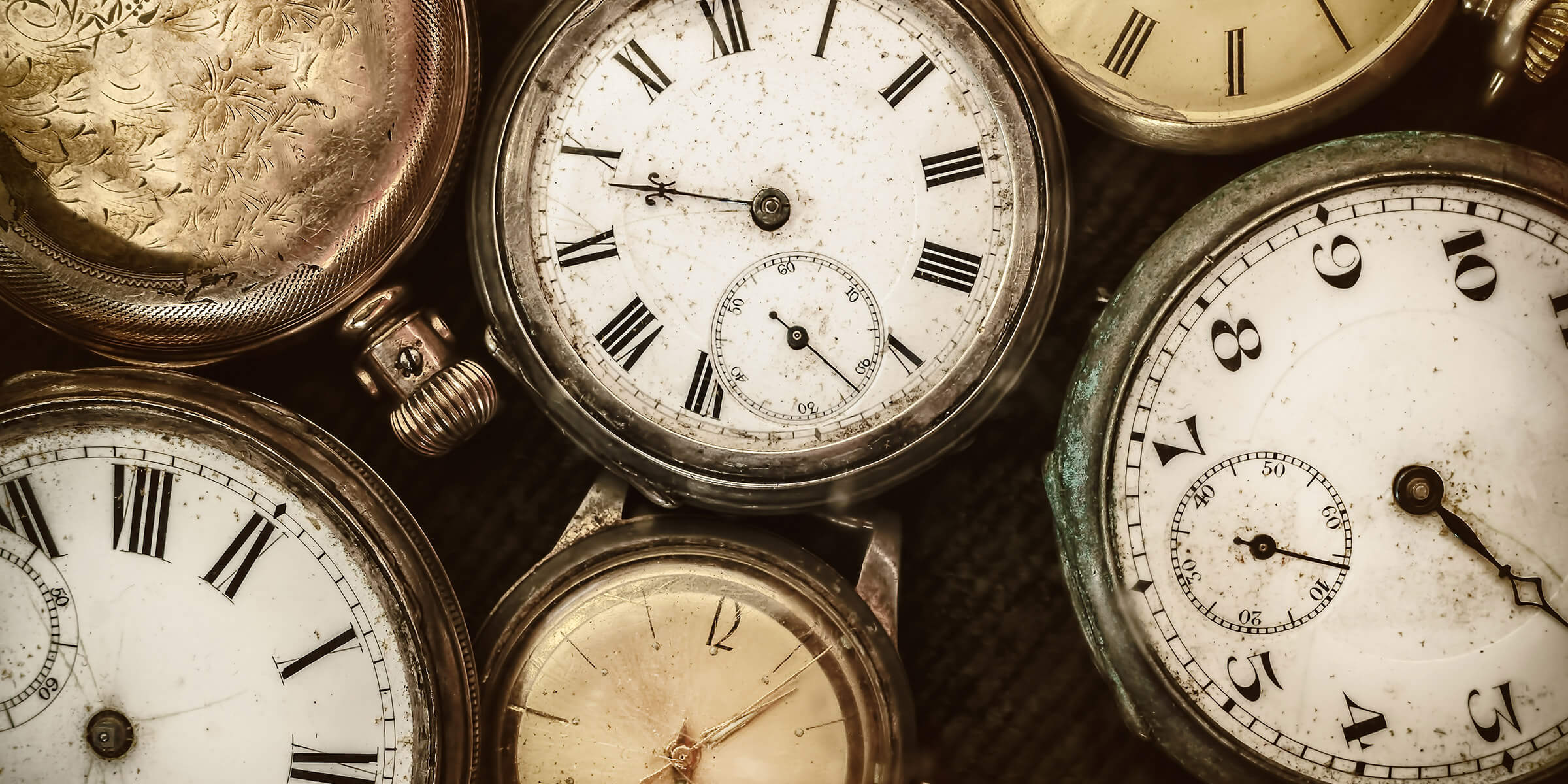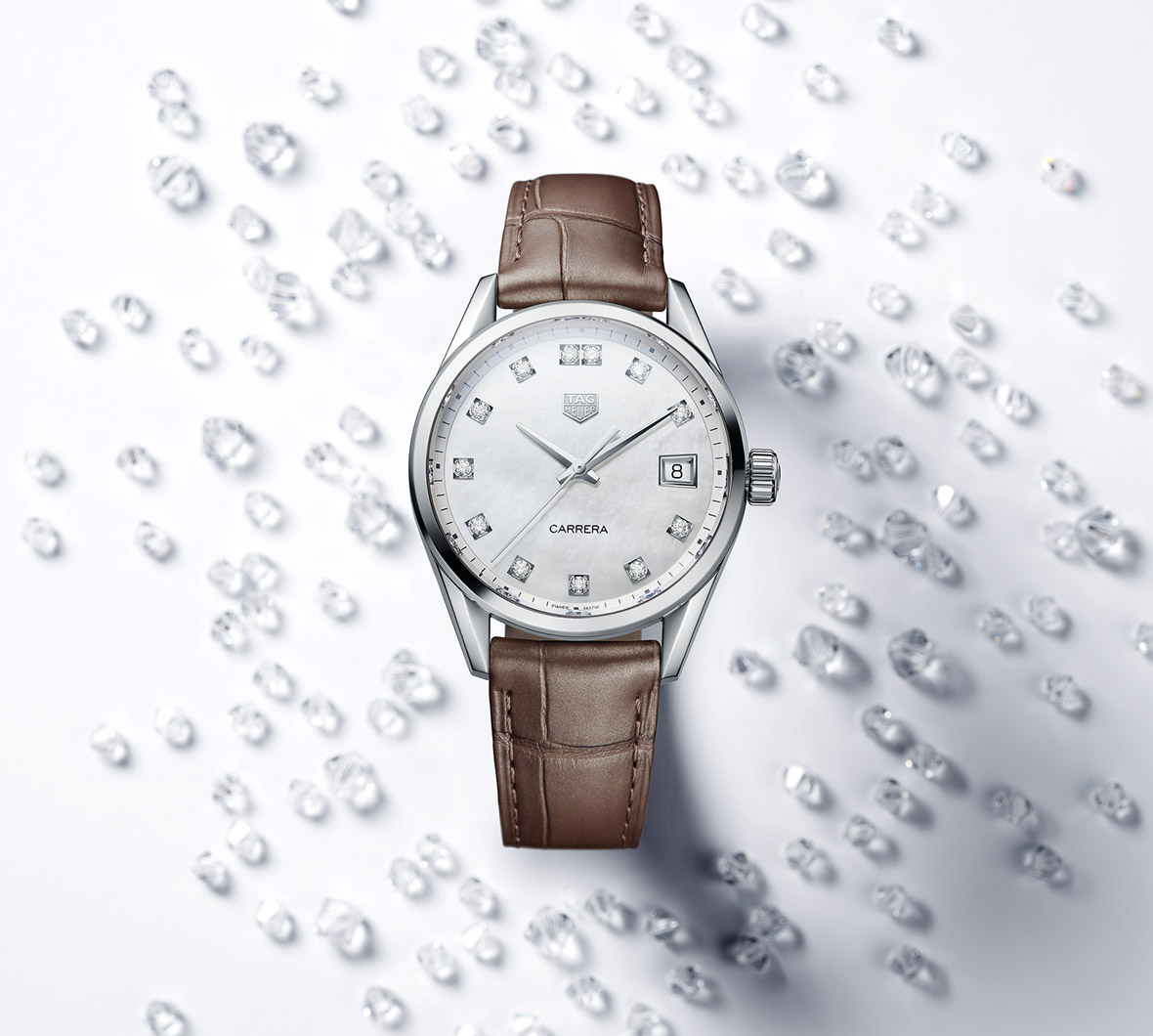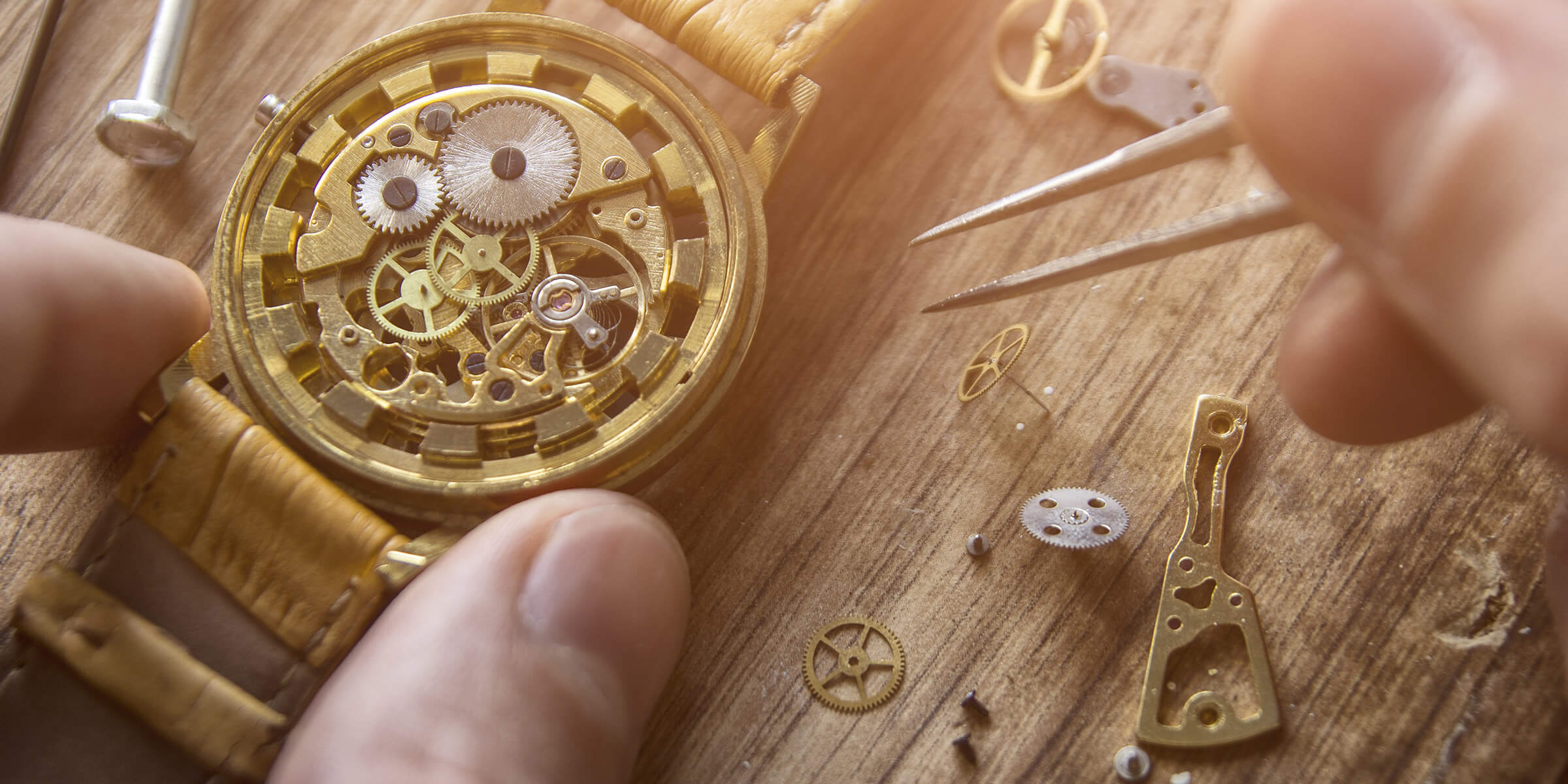Back in Time: A History of Watches
Step back in time with Ernest Jones as we look at the history of clocks, watches, and time. The history of watches; the arrow of time waits for no one.
From charting the sun’s movement to the development of water and sand clocks, all the way to the incredibly precise and luxurious devices we wear today, it's clear that whilst our method of telling the time has changed, our fascination with it has not.
Here, we'll look back at the colourful history of watches, clocks, and time. From answering key questions like when the first wristwatch was invented, to exploring the incredible innovation and engineering prowess that has shaped our wristwatch history, and that still influences many of the timepieces being built today.

A short history of clocks and time
Remarkably, the history of clocks can be traced back over three thousand years. The very earliest known method of timekeeping was placing a stick in the ground and recording its moving shadow throughout the day. This method evolved into sundials, or shadow clocks, which were used in ancient Egypt in around 1250BC. However, as sundials were only of use during daylight hours, sand clocks, or hourglasses as we'd now call them, were then developed to chart time. Other early methods also include water clocks and even candle clocks, which can be traced back to China over 1500 years ago.
The very first mechanical clock is believed to have been invented in 1275 in England. Indeed, the oldest working mechanical clock can be found at Salisbury cathedral, in Wiltshire. Originally made around 1386, the clock didn't have a face or dial and was designed to strike hours - making it a far cry from the devices we know today, but a very impressive feat of engineering, nonetheless.
The refinement of movements and accuracy continued apace, especially throughout Europe. Swiss mathematician and watchmaker Jost Burgi invented the minute hand in 1577, and another significant step forward came with the development of the first pendulum clock, patented by Dutch horologist Christiaan Huygens in 1657. The performance of a pendulum movement saw a vast improvement in accuracy, with clocks able to keep time to within a minute or two a day.
In 1787, American inventor Levi Hutchins developed the first mechanical alarm clock but, unlike the clocks many of us set at bedtime, his was a bit less user-friendly! The alarm wasn't adjustable so, as Hutchins was determined to be awake before sunrise, his alarm was set for 4 a.m. every morning. There was a wait of almost 90 years before Seth E. Thomas patented an alarm clock that could be set for any time.
Nowadays, Swiss expertise in clock and watchmaking is world renowned, but back in the 18th and 19th century, Britain was considered to be at the heart of innovative horology. So much so, the Royal Observatory in Greenwich, London, the home of Greenwich Mean Time (GMT), was the location from which all the world’s time zones were based.
When was the first wristwatch invented?
There are two conflicting answers to the question ‘who invented the first wristwatch’? Many consider the first wristwatch made to be the one designed and built by esteemed Swiss watchmakers, Patek Philippe, for the Countess Koscowicz of Hungary in 1868. But watchmaker Breguet has documentation related to ‘a repeater watch for bracelet' made for the Queen of Naples, some 57 years earlier, in 1811.


A brief history of watches
Whilst a watch’s appearance may have changed greatly over time, from a portable watch worn on a belt or pendant, to a classic pocket watch, and the stylish and ever-more innovative wristwatch, they have remained unwaveringly popular throughout their history.
The history of watches began in 1510 when the very first watch was produced in Nuremberg, Germany, by Peter Henlein. His spring-loaded design had a dial that was about 75mm, so it was much more suited to be worn on a pendant or attached to a belt. But it was a portable timepiece, and that's why Henlein is widely regarded as the father of modern watches.
During the 16th century, much smaller and slimmer portable watches began to be manufactured. As a result, pocket watches were in high demand, considered an essential fashion accessory and a status symbol for the wealthy and well-to-do. Despite the invention of the first wristwatch in the 17th century, men tended to still opt for pocket watches. Therefore, wristwatches were predominantly produced for ladies until the early 20th century. At this point, clocks and watches were being mass-produced and so were becoming far more affordable.
When World War I began, it quickly became apparent that pocket watches weren’t a practical option. So important was virtually instant access to a reliable timepiece that wristwatches became standard issue in 1917, becoming a vital part of a soldier's uniform. From this point on, the pocket watch was largely considered a fashion piece, and the wristwatch became the popular timepiece it is today. Post WWI, the demand for more reliable timekeeping continued to grow, mainly because of the increased demand for transport. Whether it be ships, rail, or aviation, the expanding travel network arguably drove the need for even greater accuracy for both clocks and watches, and advancements in precision continued apace.
During the 20th century, many iconic luxury watch brands, such as Omega, TAG Heuer, Breitling, and Tudor, developed mechanical and automatic wristwatches of exceptional quality, cementing Switzerland as the elite watchmaking powerhouse it is today. In 1969, Seiko launched the first quartz watch, a development that changed the watchmaking landscape forever and allowed brands to produce exceptionally accurate watches at a competitive price. Today, the leading luxury watchmakers and designer brands craft high-quality and incredibly accurate mechanical, automatic, and quartz movement watches to satisfy all tastes and budgets.

Discover watches at Ernest Jones
Watches are impressive feats of craftsmanship and engineering, and we hope this brief history of timepieces has helped give you an insight into the fascinating world of watchmaking. If you'd like to discover more about the different movements and features available in modern watches, you’ll find our Watch Buyer’s Guide useful. You can also explore our Luxe Journal, where you’ll find features on the world’s most prestigious and sought-after names in watchmaking, as well as other practical and inspirational topics.
Whether you’re interested in a sophisticated smartwatch or a classic Swiss chronometer, at Ernest Jones you’ll find an impressive collection of ladies’ watches and men’s watches to suit a wide range of tastes and budgets. We know that choosing your dream watch or the perfect gift for a loved one is an important decision. So, if you have any questions about specific products or collections, or you’d like a hand narrowing down your options, book a complimentary virtual or in-store appointment and a member of our expert team will be happy to help.


 They will be on video but won't see you.
They will be on video but won't see you. Make sure to enable your mic if prompted.
Make sure to enable your mic if prompted. Language:
Language:

